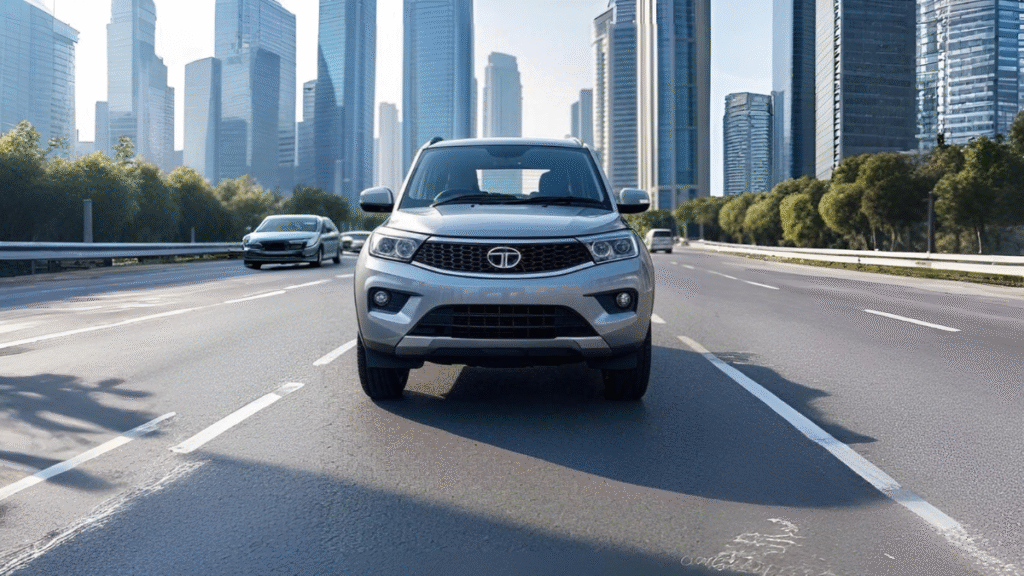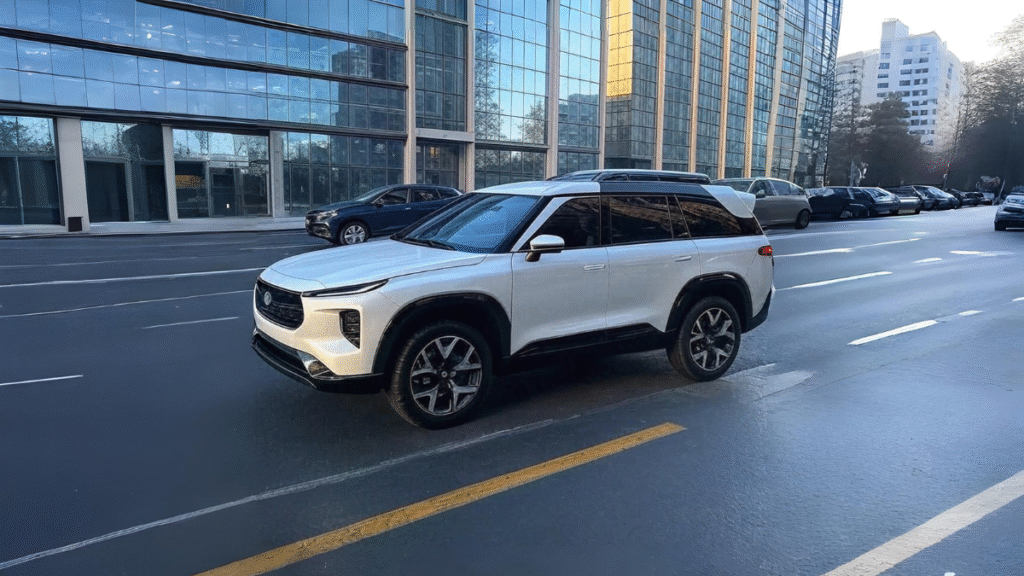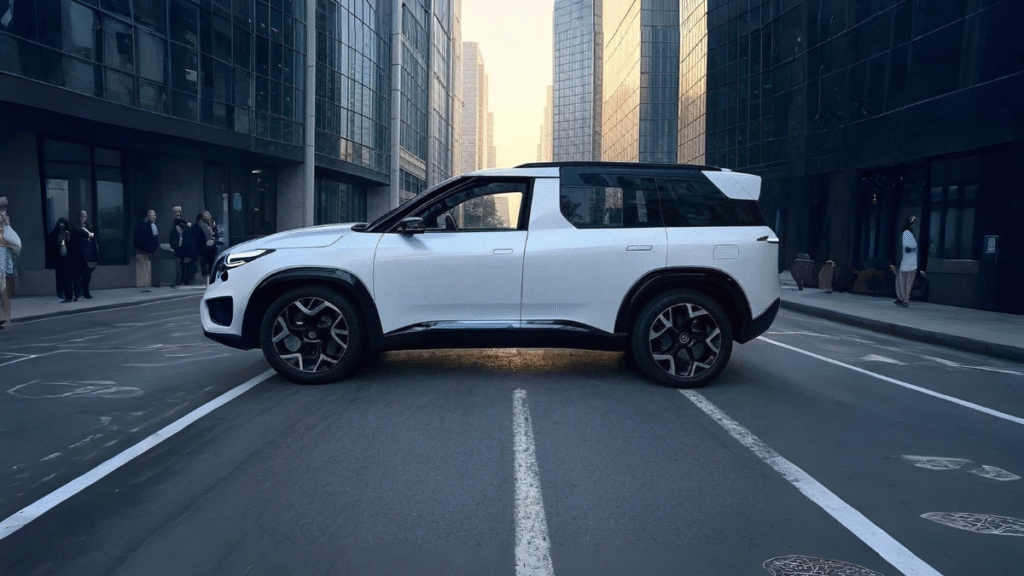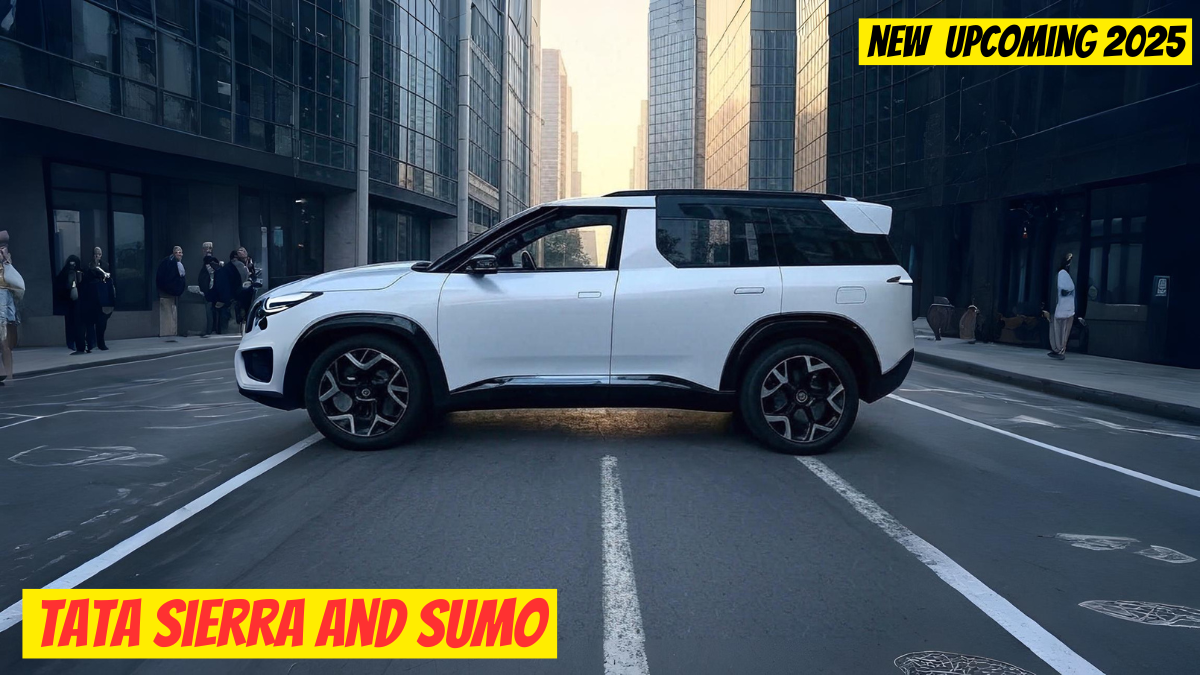
Tata Motors is set to transform the Indian SUV sector with the relaunch of its two iconic nameplates: the Tata Sierra and the all-new Tata Sumo. Both the models combine nostalgia, modernity, and practicality and are intended to appeal to the current generation of buyers when launched in the late 2025 time period. This article addresses the excitement about both the Tata Sierra and Sumo, their core proposition, specifications expected, and why they are to redefine Tata’s status in the most competitive SUV market.
The Legacy and Revival of Tata Sierra & Sumo
Tata Motors has been an innovator in the Indian automotive industry and among its star attractions lie Sierra and Sumo. The Sierra created in the bygone 1990s became India’s first SUV designed and developed in the country and was soon regarded as the epitome of adventure and individuality. The Sumo, which was introduced a little later, found a place for itself as a rugged, dependable vehicle for people moving great distances amid much acceptance in families and under fleet operators alike.
Tata is totally cashing in on the burgeoning desire for SUVs and the emotional connection stirred up by these names come 2025. These newest Sierra and Sumo are truly new avatars from the ground up, blending contemporary design, state-of-the-art technology, and rugged powertrains with core elements from the old model.
Tata Sierra: A Modern Icon Reborn
Design and Styling
The 2025 Tata Sierra is a gorgeous reimagination of the classic, straddling the retro and the futuristic. The iconic glasshouse and C-pillar of the original have inspired the silhouette, but the rest of the exterior is modern and forthright, with prominent LED lighting, raucous wheel arches, and a brash stance. The production model, freshly revealed at the Bharat Mobility Global Expo 2025, has already anticipated quite the buzz for its new-old charisma.

Engine and Powertrain Options
Sierra comes with a 1.5-litre turbo petrol engine which generates 168 bhp power and 280 Nm torque. This engine is mated to a six-speed manual gearbox. Tata Motors is likely to offer this vehicle with a 2.0-litre turbo-diesel engine. This engine will attract a segment of buyers who are more power-satisfied with torque and fuel efficiency. The electric version of the Sierra is in the pipeline as part of Tata’s full electrification journey, promising a real driving range of 420-500 km on a single charge with drivetrain options that include rear-wheel and all-wheel drive.
Read more : 2025 Toyota Land Cruiser FJ Cruiser: 4.0L V6, 326 HP Hybrid & Off-Road Specs full Leaked
Features and Technology
Table of content
Table of Contents
The New Tata Sumo 2025 is packed with several varied features that underline Tata’s commitment to safety, comfort as well as connectivity. These range from the presence of a three-screen dashboard configuration alongside a panoramic sunroof, ventilated seats, wireless charging, and double-toned leatherette seats. AVANT-GARDE DRIVER ASSISTANCE SYSTEMS (ADAS), adaptive cruise control, 360 camera coverage, lane keeping assist, and multiple airbags cover the safety aspect of the vehicle. It also has an infotainment system that supports Android Auto and Apple CarPlay along with the connected car features, rain-sensing wipers, and a digital instrument cluster that enhance its everyday usability.
Market Position and Rivals
Just like Tata Curvv and Harrier in position, this will be among the most dynamic competing entries in the SUV lineup, going through an extensive ladder: Mahindra Thar, Maruti Suzuki Jimny, Hyundai Creta, Kia Seltos, and even MG ZS EV at its thinnest. A good mix of style, versatility, and technology appealing to urban professionals as well as adventurists.
Tata Sierra Key Specifications
| Specification | Value |
|---|---|
| Engine | 1.5L Turbo Petrol |
| Power | 168 bhp |
| Torque | 280 Nm |
| Transmission | 6-speed Manual |
| Fuel Type | Petrol (Diesel & EV expected) |
| Seating Capacity | 5 |
| Key Features | 3-screen dash, ADAS, Panoramic Sunroof, Wireless Charging, Ventilated Seats |
| Expected Price | ₹10.5–22 lakh |
| Launch Timeline | Late 2025 |
Tata Sumo: The Rugged Workhorse Returns
Design and Platform
The upcoming Tata Sumo will keep the strong boxy lines that attracted many to the original but with considerable modifications in style and comfort. Expect a bold front appearance, square proportions, and high ground clearance for immediate recognition on Indian roads. The new Sumo will most likely be built on Tata’s latest SUV platform, which would mean a complete level up in terms of safety and ride quality.

Engine and Powertrain
Despite no official updates, it is speculated that the new Sumo will come with both petrol and diesel engine options, generally tuned for good low-end torque and fuel efficiency. Strong deliberations suggest that Tata may also offer a mild-hybrid option to comply with stringent emission norms and help in urban drivability. The powertrain of Sumo is also going to honor reliability and load-carrying capability making it suitable for family and commercial users.
Interior and Features
The new Sumo will focus on interior space and practicality, featuring a flexible 7/8-seater configuration. Modern touches are expected such as a touchscreen infotainment system, rear AC vents, multiple USB charging ports, and improved safety features such as ABS, EBD, and dual airbags. It will likely also come equipped with connected car technology with improved NVH (noise, vibration, and harshness) levels, addressing one of the main criticisms of the previous generation.
Market Position and Rivals
The other set of potential buyers for the Sumo would be anyone looking for a spacious SUV that has a good combination of city commute and rugged terrain capabilities. Mahindra Bolero, Force Gurkha, and entry-level variants of the Toyota Innova Crysta will be the major competitors. The new Sumo is said to offer excellent value, priced between ₹12–18 lakh, positioning itself to take on the multi-utility segment.
Tata Sumo Key Specifications (Expected)
| Specification | Value (Expected) |
|---|---|
| Engine | Petrol & Diesel |
| Power | 110–140 bhp |
| Torque | 220–300 Nm |
| Transmission | Manual/Automatic |
| Fuel Type | Petrol, Diesel, Mild-Hybrid? |
| Seating Capacity | 7/8 |
| Key Features | Touchscreen, Rear AC, Multiple Airbags, ABS, EBD |
| Expected Price | ₹12–18 lakh |
| Launch Timeline | Late 2025/Early 2026 |
Tata’s Next-Gen SUV Strategy
Tata Motors have decided to bring back the Sierra and the Sumo to synergize nostalgia with current Indian consumer needs. SUVs have become nearly half of all passenger vehicles in India, and buyers are gradually transitioning to more fashionable, safe, and versatile modes of transport. The Sierra is a lifestyle SUV targeting urban and adventure seekers, while the Sumo is intended for families and commercial operators that require space and durability.
Both models will inherit the latest safety standards, including ADAS and multiple airbags, as well as the innovated infotainment and powertrain technologies from Tata. They will be available with petrol, diesel, and electric powertrains, thus promising to be a model in every household, from the most traditional to the most accepting of EVs.
Why Tata Sierra and Sumo Matter in 2025
The reintroduction of the Sierra and Sumo is more than just a mere product launch; it is Tata Motors’ statement of intent, wherein these SUVs are set to create benchmarks in their respective segments, combining the brand’s heritage with the latest in automotive technology. This, for the buyers, means really stunning and technologically advanced cars that can also withstand the rigors of Indian roads.
With the design, comfort, and electrification being the prime focus of the Sierra, it caters largely to young professionals and families desiring a premium experience with just a dash of practicality. The Sumo, however, is going to get back its status as the ultimate choice for owners needing a robust, spacious, and reliable SUV for personal or commercial purposes.
Tata Sierra and Sumo: Head-to-Head
To help you decide which SUV might be right for you, here’s a concise comparison of their key specs and features:
| Feature/Spec | Tata Sierra | Tata Sumo (Expected) |
|---|---|---|
| Engine Options | 1.5L Turbo Petrol, 2.0L Diesel, EV | Petrol, Diesel, Mild-Hybrid? |
| Power | 168 bhp (Petrol) | 110–140 bhp |
| Torque | 280 Nm (Petrol) | 220–300 Nm |
| Transmission | 6-speed Manual (Auto/EV expected) | Manual/Automatic |
| Seating Capacity | 5 | 7/8 |
| Key Features | 3-screen dash, ADAS, Panoramic Sunroof, Wireless Charging, Ventilated Seats | Touchscreen, Rear AC, Multiple Airbags, ABS, EBD |
| Price Range | ₹10.5–22 lakh | ₹12–18 lakh |
| Launch Timeline | Late 2025 | Late 2025/Early 2026 |
Frequently Asked Questions (FAQs)
When will the Tata Sierra and Sumo launch?
Both models are expected to debut in late 2025, with the Sumo possibly arriving in early 2026.
What will be the price range for the Sierra and Sumo?
The Sierra is expected to be priced between ₹10.5–22 lakh, while the Sumo will likely range from ₹12–18 lakh, depending on the variant and features.
Will there be electric versions of these SUVs?
The Sierra will definitely offer an electric variant with a range of up to 500 km. The Sumo may get a mild-hybrid option, but a full EV is not confirmed yet.
What are the main competitors?
The Sierra will compete with Mahindra Thar, Maruti Jimny, Hyundai Creta, and MG ZS EV. The Sumo will rival the Mahindra Bolero, Force Gurkha, and entry-level Toyota Innova Crysta.
Conclusion
Tata Motor’s strategy to revive the Tata Sierra & Sumo is indeed a bold and timely approach, honoring the emotional and practical needs of Indian SUV buyers. Sierra is modern in design, good in technology, and has an electric option that is likely to draw urban customers and modern lifestyle-oriented customers. In contrast, the Sumo offers space, toughness, and a great value proposition that will attract families as well as commercial buyers.
Both SUVs will set new benchmarks in their categories and further enhance Tata’s reputation for innovation, safety, and reliability. With the expansion of the Indian SUV market, it seems that Sierra and Sumo are going to carry Tata’s next generation of models resonating beautifully with a thoughtful mix of legacy and modernity.

